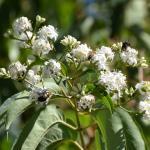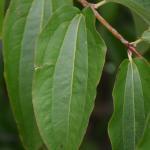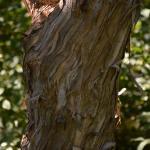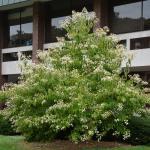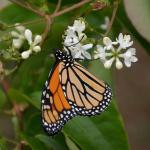A monthly e-newsletter from UMass Extension, published March to October, for home gardeners.
To read the articles in each section of the newsletter, click on the section headings below to expand the content:
Tips of the Month
October is the Month to.....
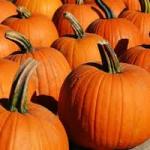 Pumpkin carving can account for more than half of all emergency room visits in the weeks preceding Halloween. Consider investing in a pumpkin carving kit to reduce reliance on sharp knives.
Pumpkin carving can account for more than half of all emergency room visits in the weeks preceding Halloween. Consider investing in a pumpkin carving kit to reduce reliance on sharp knives.
- Fall is a great time to look back at the previous gardening season and evaluate what worked and did not work as planned. Gardening projects that did not meet your expectations can be researched and new techniques/strategies can be planned for the 2020 gardening season.
- Beat the spring rush! Fall is a good time to have soil tested to determine if liming is needed to raise soil pH (most New England soils have low pH). Low soil pH affects nutrient availability to the plants. Applying lime now allows sufficient time for soil reactions to occur to correct acidity levels for the next growing season. For information on how to take a soil sample and submit it to the UMass Soil Testing Lab, go http://soiltest.umass.edu/
- Continue to be on the lookout for deer ticks (also called black-legged ticks). These ticks are vectors for Lyme disease and other diseases. They are active now and throughout the winter, any time the weather is above freezing. Hiking, fall garden cleanups, raking leaves or playing in leaf piles, etc. all put people at risk for tick bites. Consider applying an insect repellent like DEET before outdoor activity in tick prone areas. Conduct tick checks frequently (especially on children and pets) and immediately shower and wash and dry clothes after being outdoors. https://www.mass.gov/service-details/tick-borne-disease-information-for-the-public
- After fall leaf cleanup, consider applying a landscape mulch. This application will suppress winter annual weeds this fall as well as give you a jump on spring season tasks.
- Remove plants of the biennial weed garlic mustard, Alliaria petiolata, now. Pulling them up at this time of year will control first-year plants that will produce seed next spring.
- Cool-season turfgrasses utilized as lawn grasses are still growing and recovering from summer stresses. Remove fallen leaves from turf areas in order to take full advantage of sunlight that is required for photosynthesis.
- Fall is a great time to divide perennials. Perennial divisions can be planted in other parts of the garden or shared with others.
- Winterize garden power equipment including rototillers, push mowers and riding mowers. Adding fuel stabilizer to ethanol gasoline is important in order to prevent the fuel from absorbing water. Stabilizer can be add to the fuel tank or fresh stabilized fuel can be added to the tank. After either, start and run the piece of equipment for 5 to 10 minutes.
- Ornamental grasses can be cut down after several hard frosts unless winter interest is important. Fall cut back will save time in the spring and reduce the risk of new spring growth occurring before old growth is removed.
- October is an excellent time for the control of broadleaf weeds in the lawn. Spot treatment with a retail broadleaf turf herbicide can be done by most home gardeners. For large turf areas with an abundances of weeds, a commercial lawn care operator (LCO) might be considered. LCO’s should be considered for difficult-to-control lawn weeds such as wild violets and ground ivy/creeping Charlie.
Randy Prostak, UMass Extension Weed Specialist
Timely Topics
Managing Leaves in the Landscape
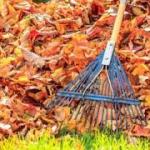 As fall approaches, there is one guarantee - leaves will eventually fall from our trees. Leaf cleanup is the bane of autumn for many, but it shouldn’t be. The yearly recycling of leaves is an important part of the forest ecosystem. The leaves and their subsequent decomposition results in the natural duff layer and high organic matter soils that make forest soils healthy. Yet in our managed landscapes, we are eager to capture every leaf and remove them from our yards, declining our plants these benefits that create healthy soils. There are several methods by which leaves can be recycled in our landscapes while still maintaining a tidy and clean landscape.
As fall approaches, there is one guarantee - leaves will eventually fall from our trees. Leaf cleanup is the bane of autumn for many, but it shouldn’t be. The yearly recycling of leaves is an important part of the forest ecosystem. The leaves and their subsequent decomposition results in the natural duff layer and high organic matter soils that make forest soils healthy. Yet in our managed landscapes, we are eager to capture every leaf and remove them from our yards, declining our plants these benefits that create healthy soils. There are several methods by which leaves can be recycled in our landscapes while still maintaining a tidy and clean landscape.
One of the simplest methods of managing leaves is to simply mow the leaves with a mower. Like grass clippings, the mown leaves can be left on the lawn. Mowing leaves works best when there is only a light covering of leaves on the grass. The mowed leaves will quickly break down, further improving the soil. Fall is an important time for cool season turfgrass growth and, by keeping leaves from accumulating on the grass and allowing photosynthesis, encourages a healthy lawn.
Mulching is another underutilized method for managing leaves in the landscape. Leaf mulches reduce evaporation, buffer soil temperatures, inhibit weed growth, and reduce soil compaction and erosion. As the leaves decompose, they release valuable nutrients and help build soil organic matter. Leaf mulch is a great alternative to bark or wood-based mulches. Using leaf mulch has the potential to save money, reducing the cost of leaf removal and reducing the need for costly bark or wood-based mulches.
When using leaves for mulch, the leaves should be shredded. Shredding is easily done with a mower using the bagging attachment. Shredding the leaves before using as a mulch is important as the smaller pieces are less susceptible to being blown away by fall and winter winds. The smaller particle sizes also increase the rate at which the leaves decompose. Leaves that accumulate in garden beds and borders can be blown or raked onto a lawn and mown to be shredded and replaced.
Shredded leaves can be used as mulch around shrubs and trees, garden beds, flower beds and even the vegetable garden. They can be spread in a thick layer, 3-6 inches deep, depending on the situation. The shredded leaves have an appealing soft texture and natural color that fits most landscapes.
Another option for managing your leaves is to compost the leaves. Once composted, the compost can be applied to soil or added to potting soils, significantly improving some soil properties. Compost can help sandy soils retain moisture and nutrients, improve water infiltration on compacted or clayey soils, and improve soil biology.
Leaves can be shredded or left whole to compost, although shredded leaves will compost faster. A general rule of thumb for composting is to use the 3:1 recipe of browns to greens. This ratio is ideal for the microorganisms that will break down these materials and create compost. Browns represent materials high in carbon, greens represent materials high in nitrogen. Leaves would be considered browns; kitchen scraps would be considered greens. Leaves can also be stockpiled as a source of browns (carbon) for composting year-round. Compost is a remarkable soil amendment that has the potential to significantly improve soil quality.
Leaves can also be used directly for soil improvement. Leaves can be collected and incorporated into the soil when preparing new gardens or into annual flower beds or vegetable gardens. Since leaves are relatively high in carbon, soil incorporation of large amounts of leaves can tie up nitrogen in the soil. To avoid this situation, incorporate only small amounts of leaves, incorporate them in the fall, and consider using a little nitrogen fertilizer to hasten the decomposition.
Happy raking!
Russ Norton, Agriculture & Horticulture Extension Educator, Cape Cod Cooperative Extension
News for Gardeners
The 2020 UMass Extension Garden Calendar is Now Available!
 Gardening is enjoyed by so many people — it can ease stress, keep you limber, and even improve your mood! To help keep your plants healthy, productive, and beautiful, the 2020 UMass Garden Calendar offers helpful guidelines, daily tips, and an inspiring garden image each month!
Gardening is enjoyed by so many people — it can ease stress, keep you limber, and even improve your mood! To help keep your plants healthy, productive, and beautiful, the 2020 UMass Garden Calendar offers helpful guidelines, daily tips, and an inspiring garden image each month!
For many years, UMass Extension has worked with the citizens of Massachusetts to help them make sound choices about growing, planting and maintaining plants in their landscapes, including vegetables, backyard fruits, and ornamental plants. Our 2020 calendar continues UMass Extension’s tradition of providing gardeners with useful information. This year’s calendar features the diversity of rhododendrons and azaleas available to gardeners, as well as their cultural requirements and care.
Go to umassgardencalendar.org to see images from this year's calendar, online ordering, a printable order form, and the chart for bulk discounts (on quantities of 10 or more).
Enjoy FREE SHIPPING on orders placed by NOVEMBER 1st (for quantities of 9 or fewer).
Each Month Features
- An inspiring garden image
- Daily gardening tips for Northeast growing conditions
- Daily sunrise and sunset times
- Phases of the moon
- Plenty of room for notes
- Low gloss paper for easy writing
Cost: $14
ORDER ONLINE at www.umassgardencalendar.org
Trouble Maker of the Month
Earthworms of Massachusetts: The Past, Present, and “Crazy”!
Background/History
Earthworms are not insects. They are typically classified within the Phylum Annelida (segmented or ringed worms) and Class Clitellata (worms possessing a type of collar structure which holds importance during reproduction and can be used in identification). Glacial activity in the Pleistocene is thought to have eliminated what would have been most of the native earthworm species from Canada and the northern United States at the time. Few native earthworms remained in the areas impacted by the glaciers by the time of European settlement. Since then, at least 45 non-native species of earthworms have been introduced into North America (north of Mexico) from areas such as Europe, Africa, Asia, and South America (Hendrix and Bohlen, 2002).
According to past literature, at least 21 species of earthworms have been collected from various locations in Massachusetts, including Amynthas agrestis, one of the various species receiving a lot of attention recently and commonly being referred to as “jumping worms, crazy worms, crazy snake worms, or Asian jumping worms”, among other names. Amynthas agrestis, for example, was previously reported in Hampshire County on October 9, 1974 and Suffolk County in Boston, MA as reported by Gates (1953) and at the time referred to as Pheretima agrestis (Reynolds, 1977).
Recent Extension publications and outreach from other states has called to light concerns that these particular species cause further damage to forests and perhaps even landscapes through their ability to alter the soil structure and chemistry of these locations. They are able to consume a critical layer of organic matter that supplies nutrients vital for other wildlife, particularly in forests. The current concern seems to be that certain species of Asian origin may devour organic matter more rapidly than their European counterparts. Some state Departments of Environmental Conservation (such as New York) are going so far as to prohibit the possession, sale, import, purchase, or transportation of these species.
As such, residents of Massachusetts have become increasingly concerned and recently are reaching out to UMass Extension for help. The intent of this article is to share more information about the history of earthworms in Massachusetts, along with information about the “crazy worm” species of concern, in hopes that this material can aid citizens who are presently apprehensive of these species.
Species Known Previously to Massachusetts and their Origins
The following table of earthworm species previously detected in Massachusetts, along with their origins, is adapted from Reynolds (1977) and Hendrix and Bohlen (2002).
| Earthworm Species Detected in MA | Area of Origin |
|---|---|
| Amynthas agrestis | Asia |
| Amynthas hawayana | Asia |
| Allolobophora chlorotica | Europe |
| Allolobophora limicola | Europe |
| Aporrectodea longa | Europe |
| Aporrectodea trapezoides | Europe |
| Aporrectodea tuberculata | Europe |
| Aporrectodea turgida | Europe |
| Bimastos parvus | North America |
| Dendrobaena octaedra | Europe |
| Dendrodrilus rubidus | Europe |
| Eisenia fetida (Previously known as E. foetida) | Europe |
| Eisenia rosea | Western Palearctic and Nearctic |
| Eiseniella tetraedra | Europe |
| Eisenoides lonnbergi | North America |
| Lumbricus castaneus | Europe |
| Lumbricus rubellus | Europe |
| Lumbricus terrestris | Europe |
| Octolasion cyaneum | Europe |
| Octolasion tyrtaeum | Europe |
| Sparganophilus eiseni | Nearctic |
Why is There Concern?
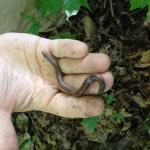 It should be first mentioned that the “Asian crazy worm” or the “Crazy snake worm” or “Asian jumping worms” are not directly harmful to people or their pets. Although they may quickly writhe or squirm when disturbed and may move like snakes, they pose no direct physical threat to people.
It should be first mentioned that the “Asian crazy worm” or the “Crazy snake worm” or “Asian jumping worms” are not directly harmful to people or their pets. Although they may quickly writhe or squirm when disturbed and may move like snakes, they pose no direct physical threat to people.
Certain aspects of earthworm activity and the ecological impacts they can have are considered undesirable in certain locations, such as forests. Such impacts include, but are not limited to: removing and burying soil surface “residues” which otherwise can protect soils from erosion, increased erosion due to the productions of casts, increased compaction of surface soils, nuisance deposition of casts on lawns and golf courses, dispersion of weed seeds in certain environments, transmission of plant and animal pathogens, increasing the loss of soil nitrogen (leaching and denitrification), and increasing the loss of soil carbon through enhanced microbial respiration (Hendrix and Bohlen, 2002).
Recent reports regarding the species referred to as “jumping worms, crazy worms, crazy snake worms, or Asian jumping worms” cite a marked reduction in the amount of leaf litter on the forest floor or rapidly disappearing garden mulches as issues directly noticed by concerned citizens where these worms are present. Even wood chips are being reported as rapidly consumed where these species are present.
Past Recognized Benefits of Earthworms
In agricultural and pastoral systems, earthworms have often been shown to have beneficial impacts to soils. In these specific locations, the fact that earthworms can increase the rate of plant litter decomposition and increase nutrient transformation and plant nutrient uptake are seen as valuable impacts of these organisms. Other positive influences earthworms have in these locations include improvement of soil aggregation and porosity, along with enhanced water infiltration and solute transport (Hendrix and Bohlen, 2002). Essentially, earthworms can be beneficial in agriculture due to positive impacts on soils in those settings, increased nutrient and water availability, and the stimulation of certain microorganisms that in turn stimulate plant growth.
That said, these interactions are not considered beneficial in all locations. For example, as previously mentioned, some of these interactions are considered detrimental in forest settings.
What Can Concerned Citizens Do?
There is no permanent “cure” or method through which these Asian or European earthworm species can be eradicated due to their long history in North America and Massachusetts (since European settlement for some) as well as aspects of their biology. With regard to the “crazy worms”, these species are not known to overwinter as adults, but rather perish with the onset of cold temperatures, but their young are able to survive in tiny, resilient cocoons which are very small in size and the color of the soil surrounding them. Therefore, these cocoons can be nearly impossible to spot with your own eyes and are easily moved (albeit accidentally) in these substrates.
It seems that at this time, if a citizen is concerned about these earthworms, they can aid in reducing their spread by avoiding actions that increase their rate of distribution through human mediated movement. Reportedly, “crazy worm” species naturally expand their range very slowly. For example, a best management practice may be to avoid purchasing these species for fishing bait or vermicomposting, or avoid moving soils or compost where these worms are present to new locations.
If you think you have “crazy worms” in your garden, do not panic. While you may not be able to eliminate them from your garden, you can still play a part in preventing their spread.
Further Resources:
Cornell University Cooperative Extension:
http://ccetompkins.org/resources/jumping-worm-fact-sheet
Plant and Soil Science, University of Vermont:
http://blog.uvm.edu/jgorres/amynthas/
University of New Hampshire Cooperative Extension:
https://extension.unh.edu/blog/invasive-spotlight-jumping-worms
Works Cited:
Hendrix, P. and P. J. Bohlen. 2002. Exotic Earthworm Invasions in North America: Ecological and Policy Implications. BioScience. Vol. 52 No. 9: 801-811.
Reynolds JW, Görres JH, & Knowles ME 2015. A checklist by counties of earthworms (Oligochaeta: Acanthodrilidae, Lumbricidae and Megascolecidae) in the states of Maine, New Hampshire and Vermont, USA. Megadrilogica 17: 125–140.
Reynolds, J.W. (1977) The Earthworms of Massachusets (Oligochaeta: Lumbricidae, Megascolecidae and Sparganophilidae). Megadrilogica, 3, 49–54.
Tawny Simisky, Extension Entomologist, UMass Extension Landscape, Nursery, & Urban Forestry Program
Plant of the Month
Heptacodium miconiodes, Seven-son Flower
Fall flowering shrubs and trees are hard to come by in the Northeast, making Heptacodium miconiodes a welcome sight in the landscape. This multi-season beauty’s peak time of appeal is later summer to early fall, adding diversity to the landscape and serving as a great late-season nectar source for butterflies and other pollinators. This unique plant is somewhat new in commerce in the United States. It was first brought to the US from China in the early 1900s but was somewhat forgotten until the 1980s when it was reintroduced.
The genus name, Heptacodium, comes from the translation of the Chinese name for the plant and refers to the seven-part flower clusters. Flowers emerge in late summer to early fall (usually September). The white, fragrant flowers occur in terminal clusters and are very showy. Flower clusters give way to small fruits surrounded by persistent sepals. The sepals change from green to pinkish-red and are equally showy to the flowers, adding additional ornamental interest late into the fall.
Leaves are a medium, glossy green ovate with a pointed tip. Leaves are attractive but don’t offer fall color. The bark exfoliates in thin strips, resembling that of crapemyrtle, and provides winter interest. Plants can be trained as a large shrub or small tree with an upright, loose habit growing 15-20’ tall and about half as wide.
Seven-son flower is best planted in well-drained soil in full sun but can tolerate dappled shade. It is adaptable to many soils and easily transplants from a container. Heptacodium miconiodes does not have serious insect or disease problems, but canker-related dieback has been reported. This unique plant can be used as a specimen, accent plant, or as part of the shrub border or woodland garden. Although somewhat difficult to find, seven-son flower can bring some unexpected ornamental features to the fall landscape.
Cultivars:
‘Temple of Bloom’ – 6-10’, sepals have a deeper red color, early bloom time (for extended bloom time in colder areas)
Additional Resources
Landscape Message - for detailed timely reports on growing conditions and pest activity
Home Lawn and Garden Resources
Find us on Facebook! www.facebook.com/UMassExtLandscape/
Follow us on Twitter for daily gardening tips and sunrise/sunset times. twitter.com/UMassGardenClip
Diagnostic Services
The UMass Extension Plant Diagnostic Lab provides, for a fee, woody plant and turf disease analysis, woody plant and turf insect identification, turfgrass identification, weed identification, and offers a report of pest management strategies that are research based, economically sound and environmentally appropriate for the situation. Accurate diagnosis for a turf or landscape problem can often eliminate or reduce the need for pesticide use. Sampling procedures, detailed submission instructions and a list of fees.
The UMass Soil and Plant Nutrient Testing Laboratory at the University of Massachusetts Amherst provides test results and recommendations that lead to the wise and economical use of soils and soil amendments. The Routine Soil Analysis fits the needs of most home gardeners. Sampling procedures plus the different tests offered and a list of fees.
Spread the Word!
Share this newsletter with a friend! New readers can subscribe to our Home Gardener E-Mail List.
